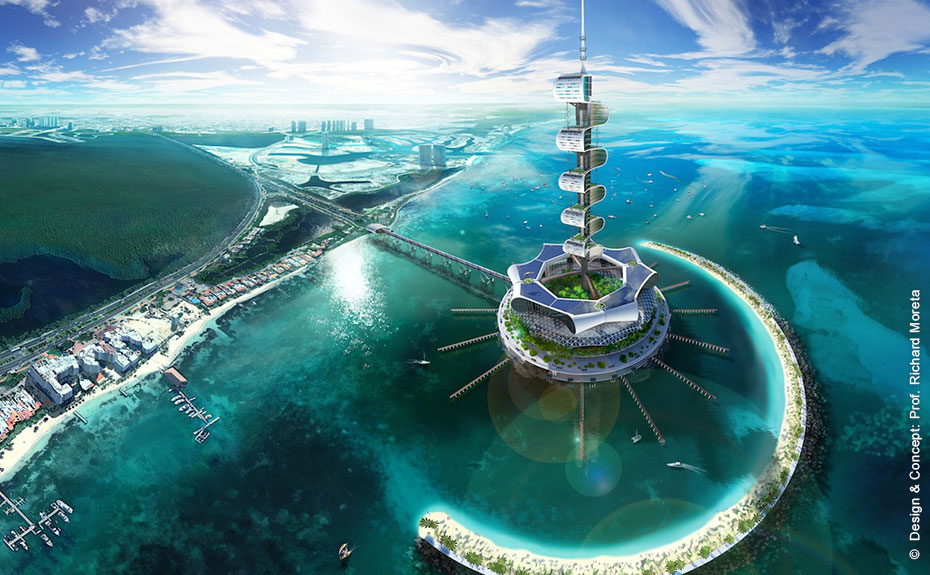
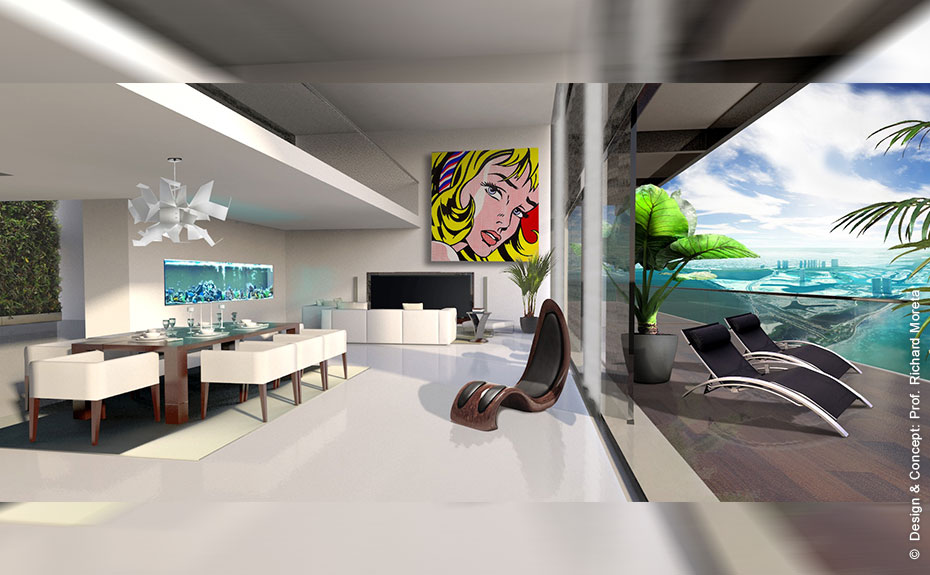
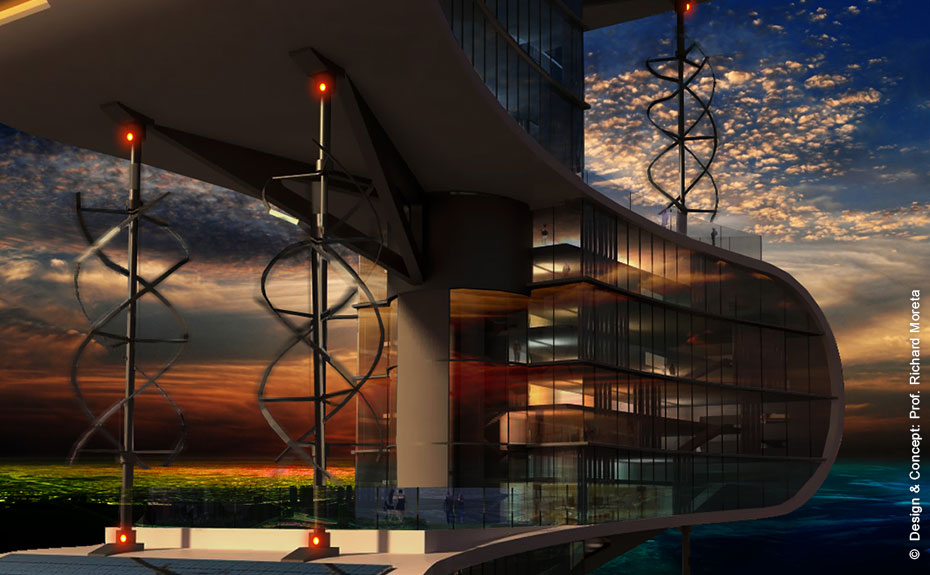
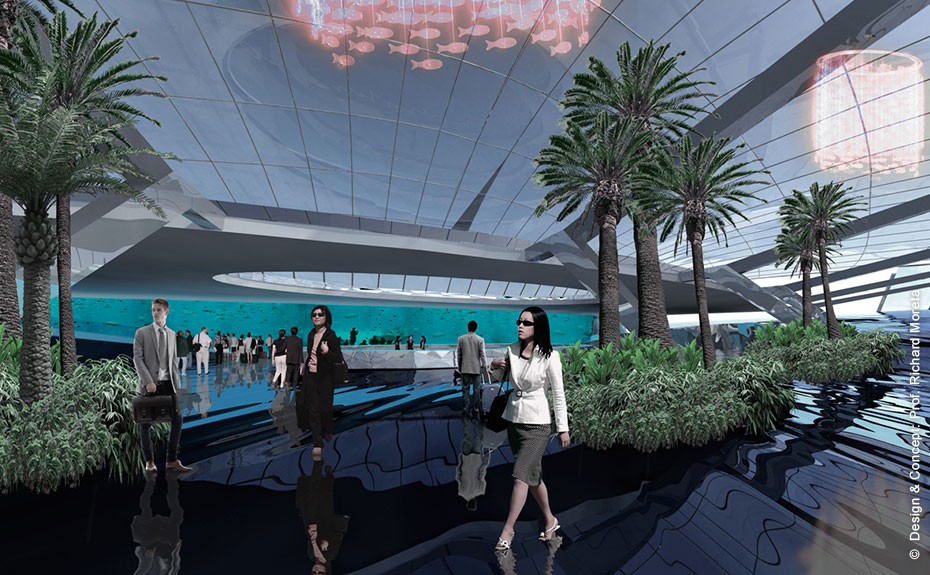
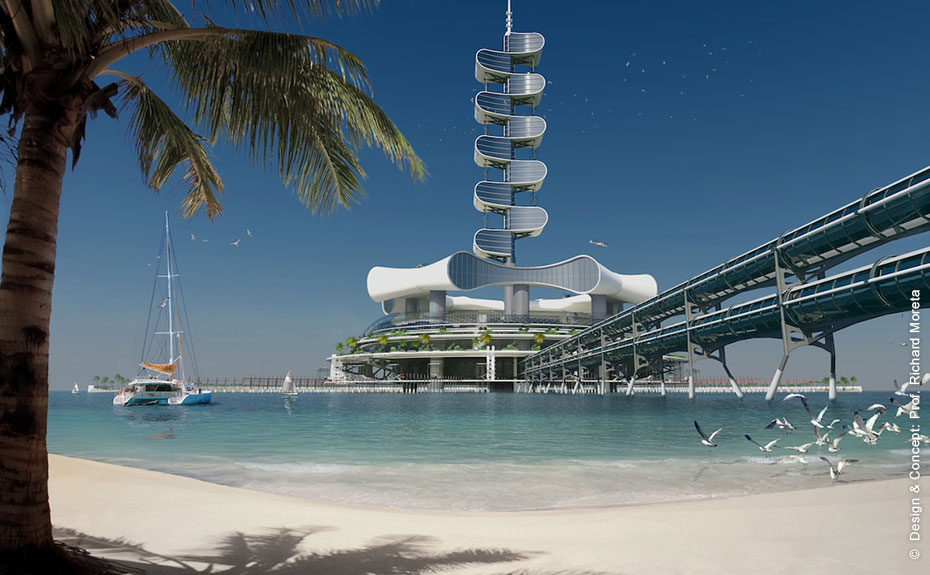
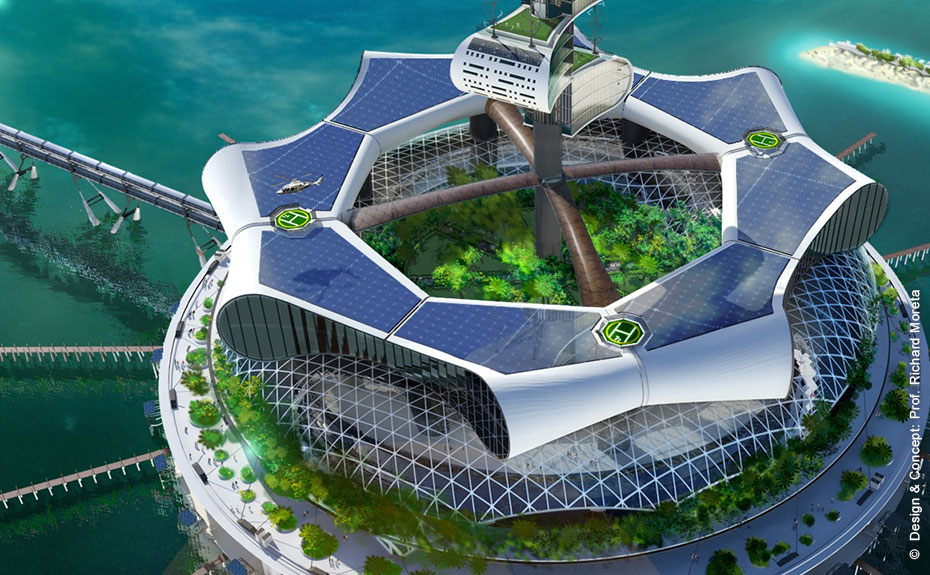
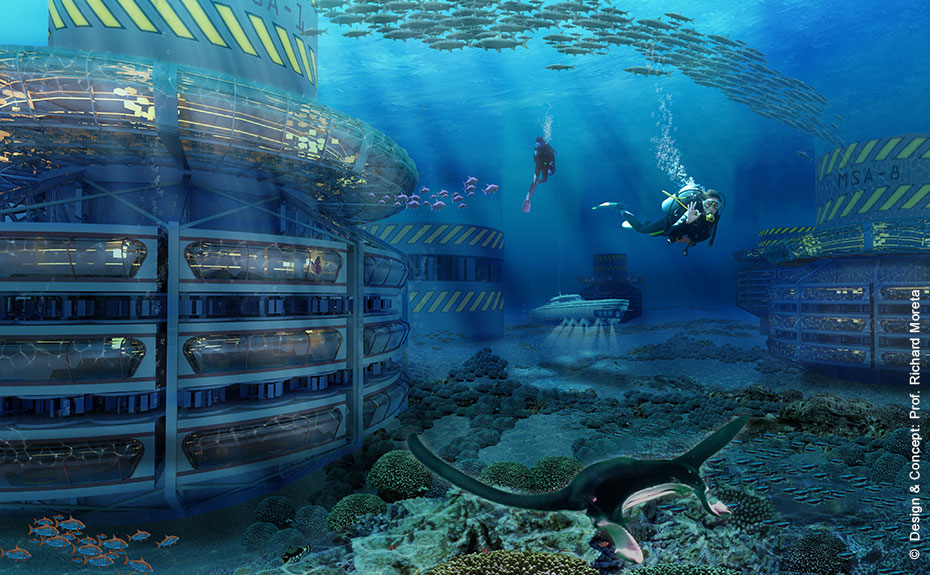
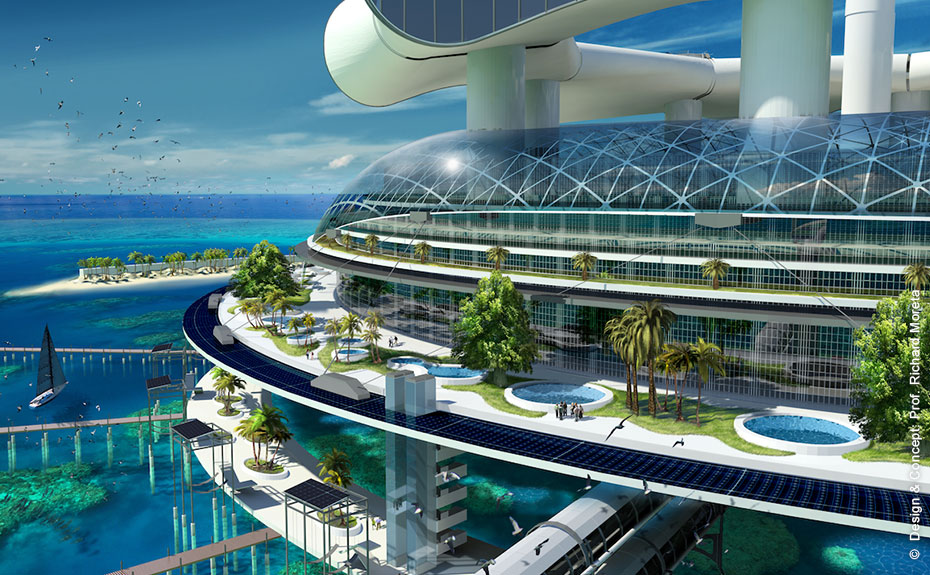
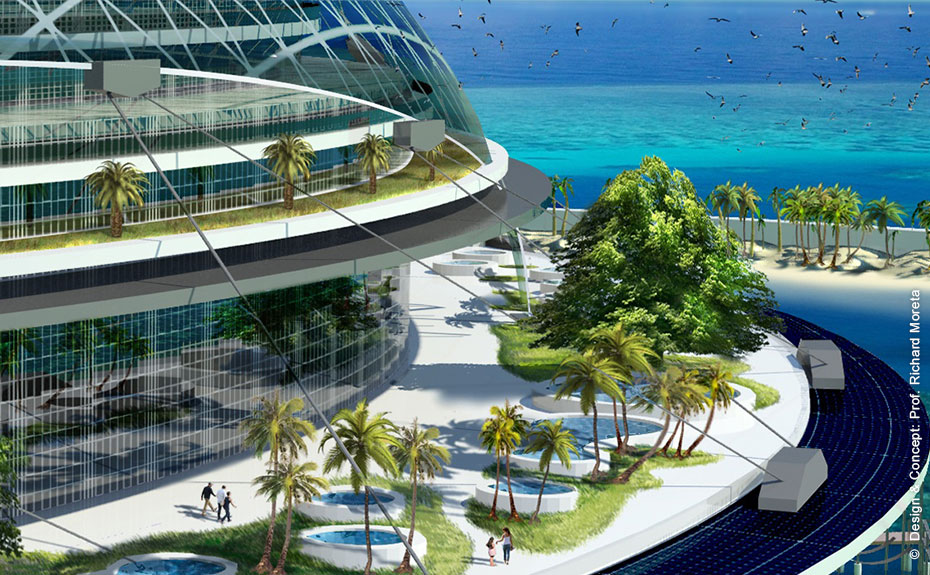
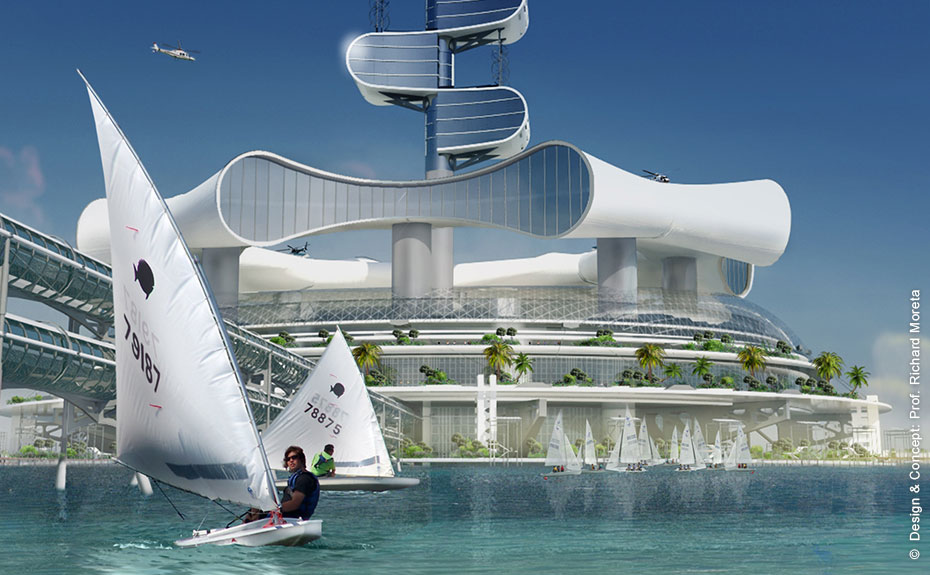
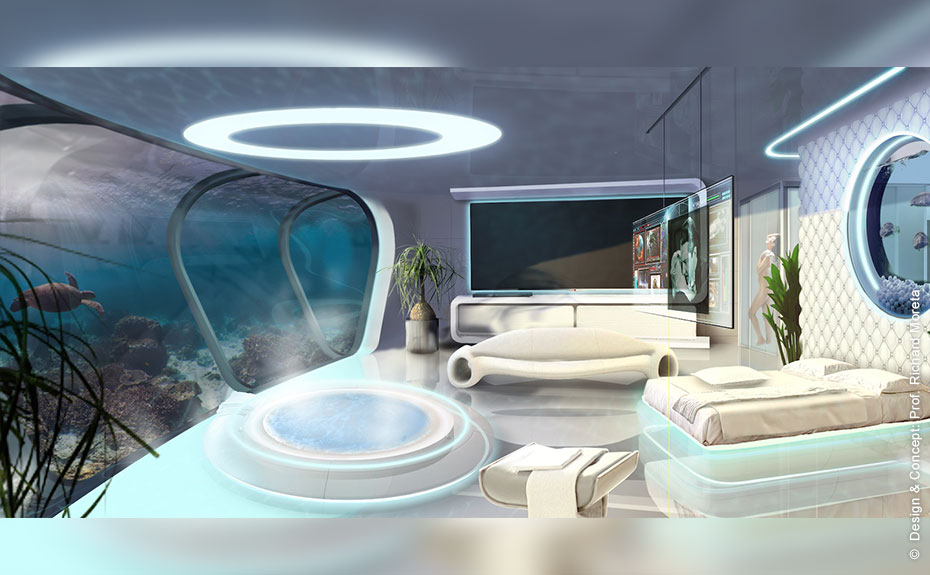
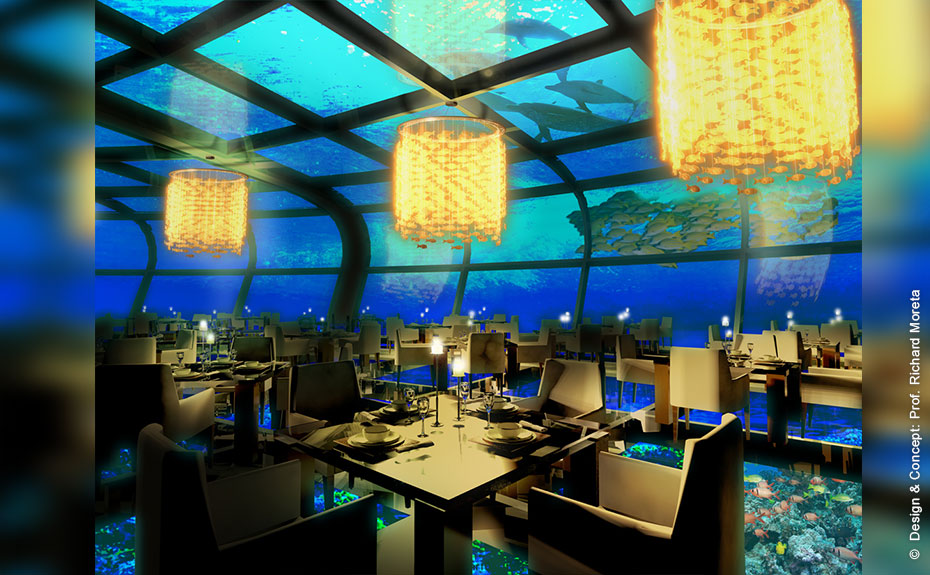
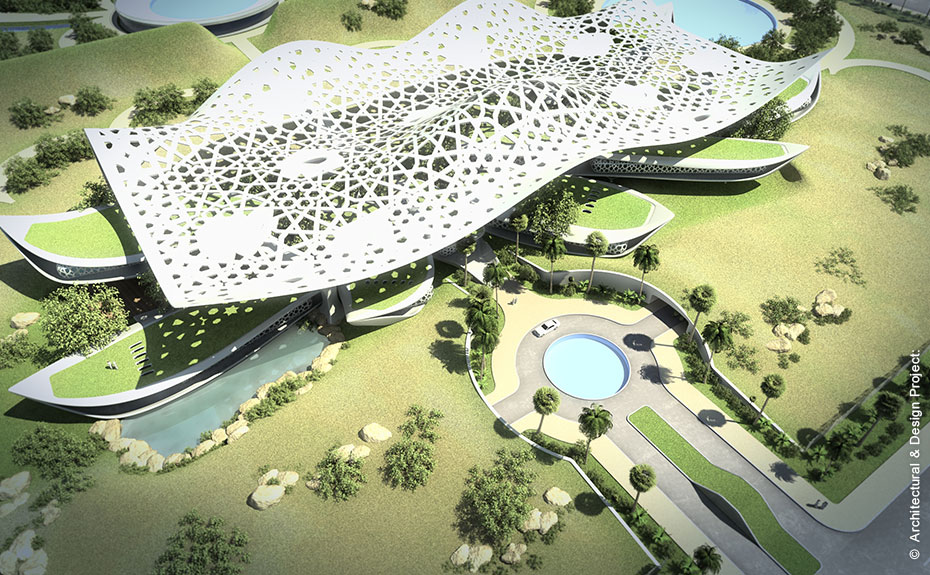
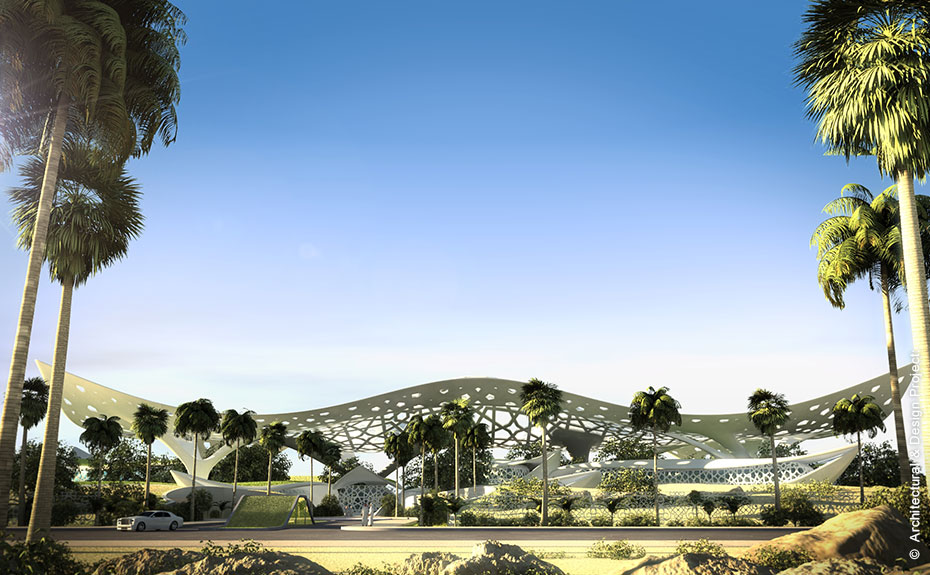
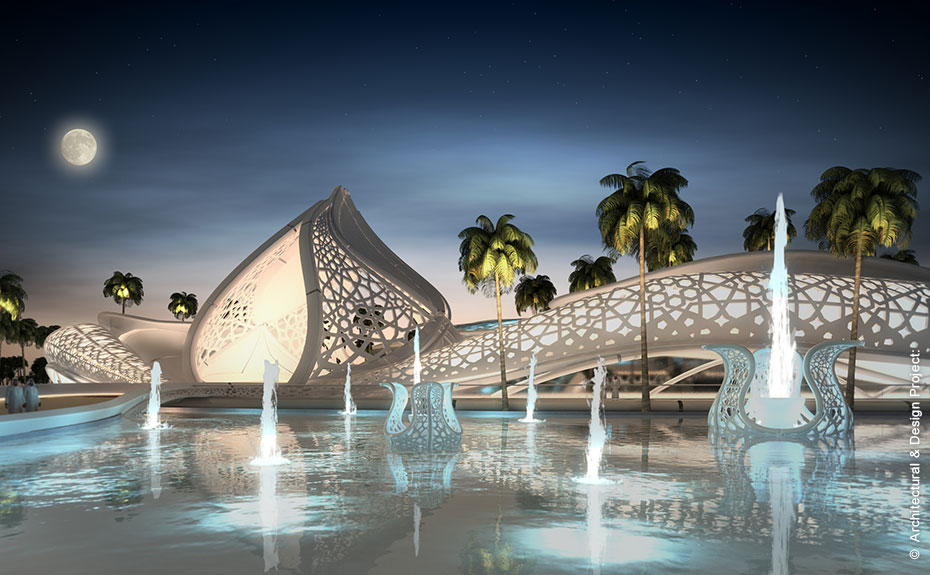
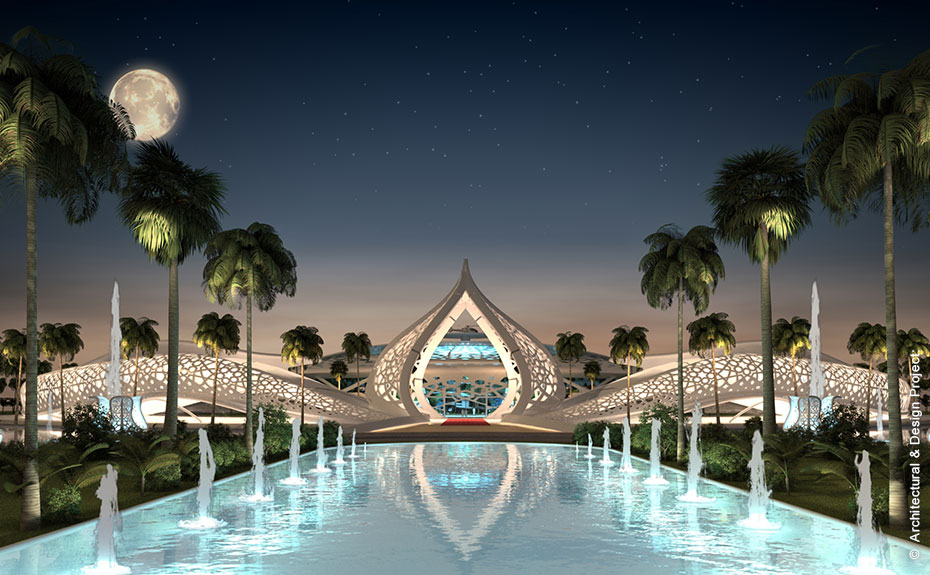
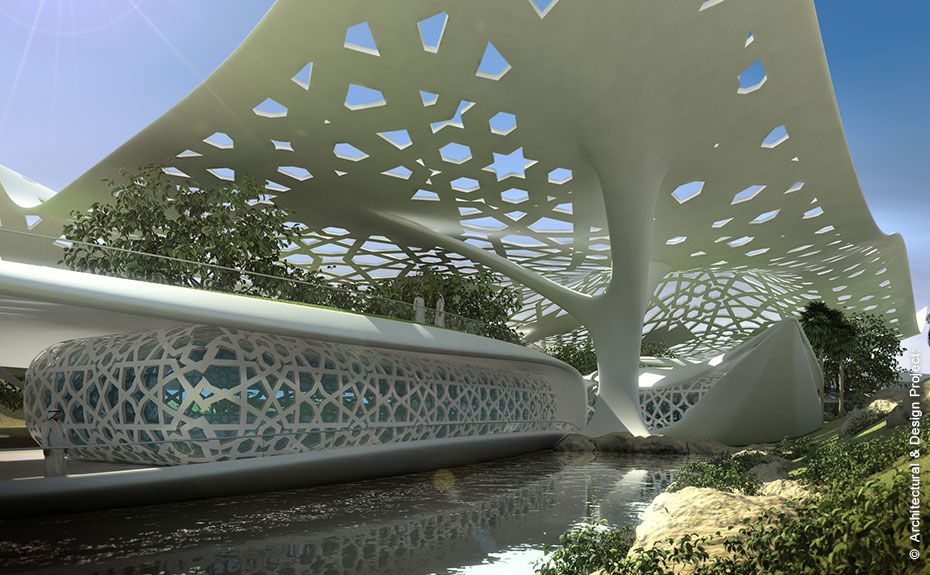
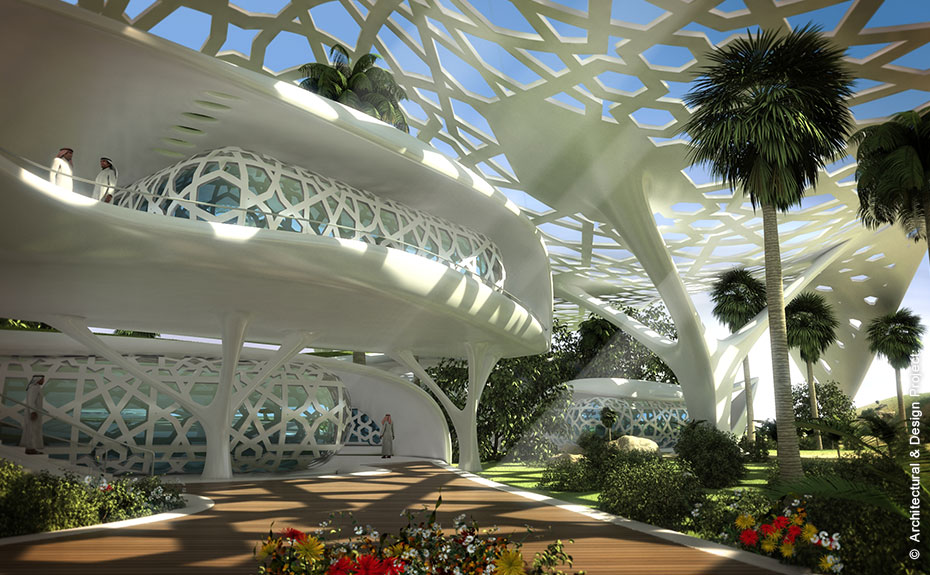
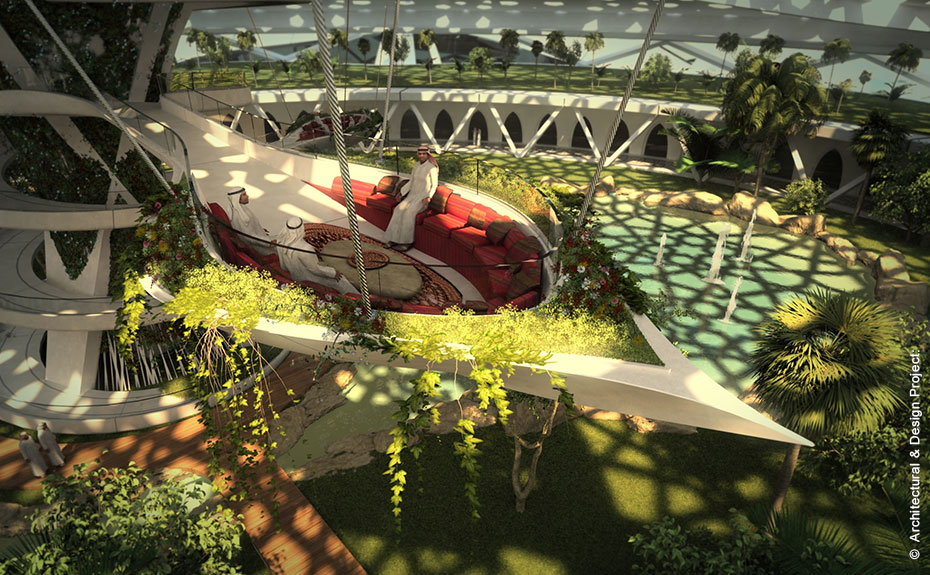
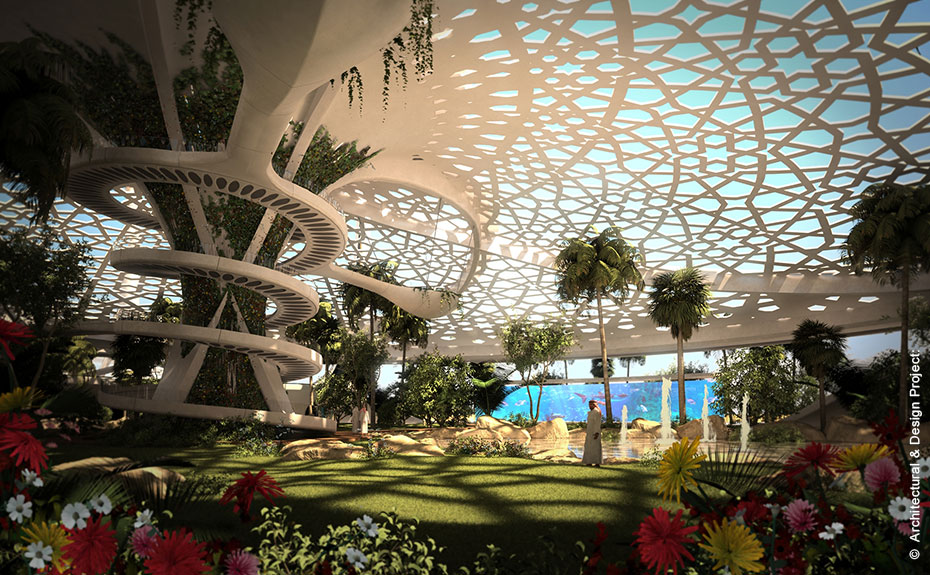
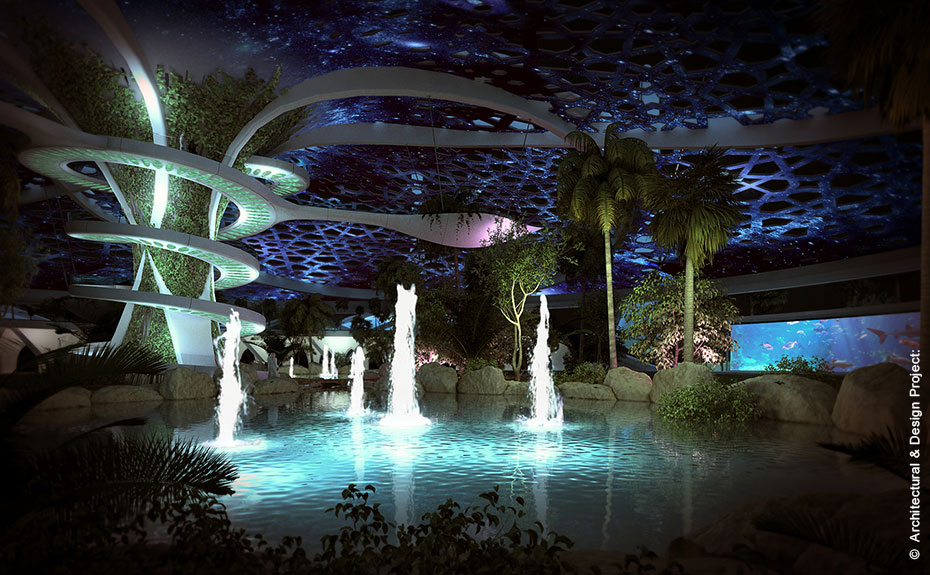
Eco-friendly energy in smart use – creative solutions for the future
Back to overview
Sunlight, water, wind and geothermal power are a virtually boundless supply of natural, renewable sources of energy on our planet. With new technologies on the rise and demand unlikely to weaken in future, smart energy and green buildings can add value on the energy market. They’ve become a focus of investors and urban developers.
As an upshot, holistic, sustained architecture and design projects have begun to renew the way modern constructions are built. Resource-saving buildings with a parallel focus on economic, ecological and socio-cultural aspects are based on innovative, pioneering ideas and technological solutions.
It’s time for a new way of thinking.












Grand Cancun // Mexico
Fascinating, futuristic, a visionary resort concept: Grand Cancún
The Grand Cancún project was presented for the 50th anniversary of the Mexican city of Cancún, as a new landmark. It combines mystic shapes from the Maya civilisation with a visionary approach to the future. From the outset, Grand Cancún has been intended to function as a counterweight to touristy Cancún. It will be a place halfway between urban and aquatic life, a high-quality resort off the shore and a green investment, a premium resort to work and live in. Grand Cancún will be developed as an attractive business location, with new hotels and functional areas for festivities and events. This new space will offer facilities for relaxation and training. The project will lead to the creation of jobs, too. Conditions at the Grand Cancún will be ideal for generating sustainable energy. Grand Cancún is a stepping stone into a new world. It’s an emblematic structure to host viable options for life in the future.
Grand Cancún boasts a radically new, responsible approach to new technologies of communication, safety, hygiene and renewable energies like solar and wind power, geothermal and hydropower. It is sustainable and respectful by design. Its design and construction aim to meet future needs of city-dwellers. For the architects, Grand Cancún is “the vision of an ecological paradise, an Eden housed in a city building on a platform, offshore.”
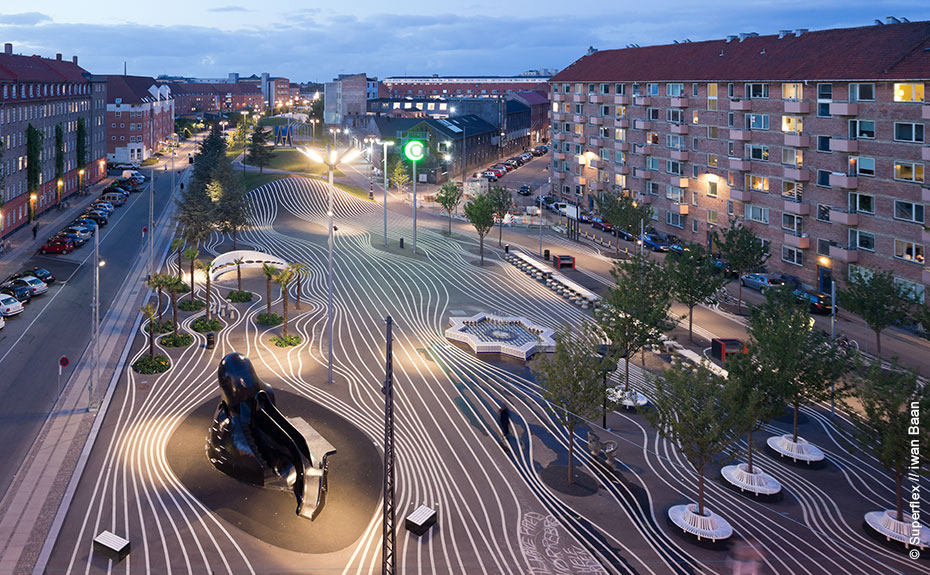
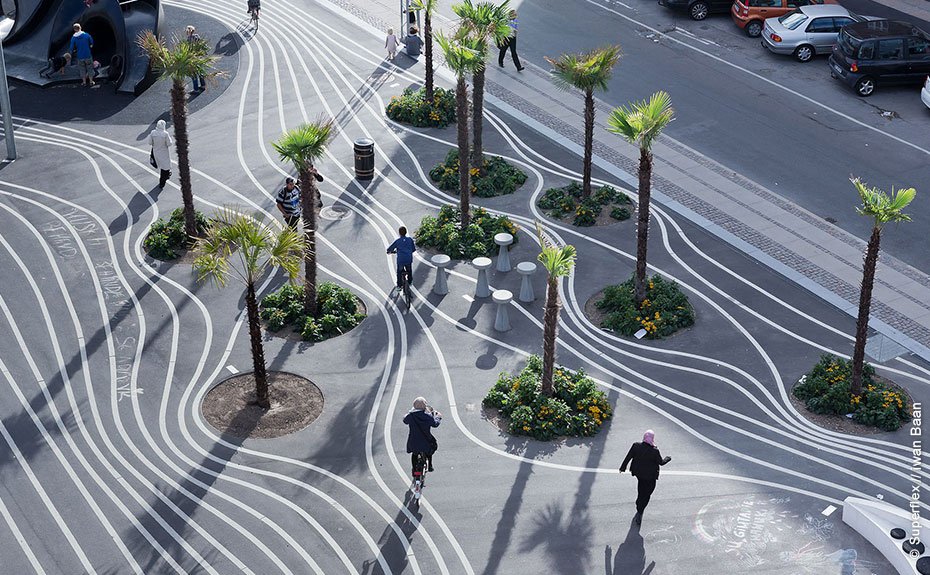
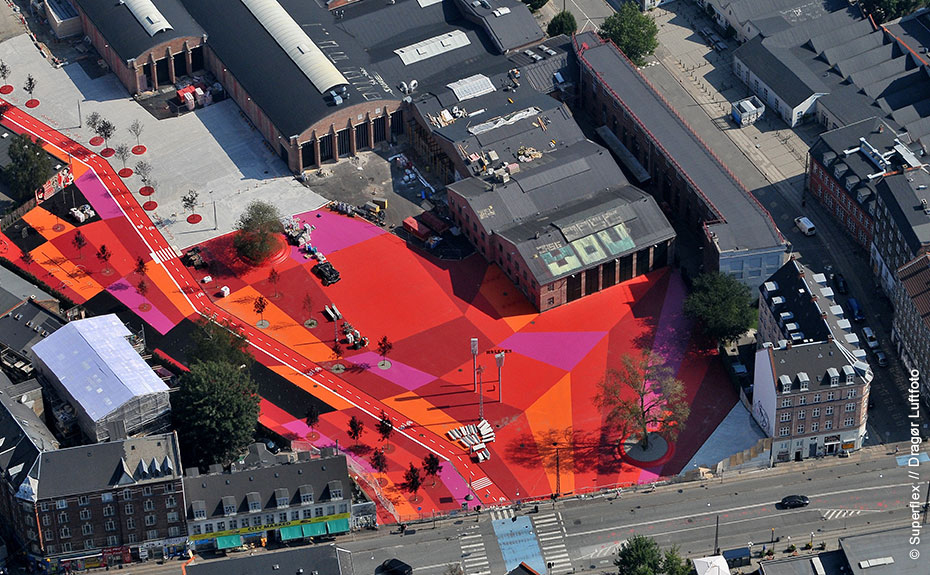

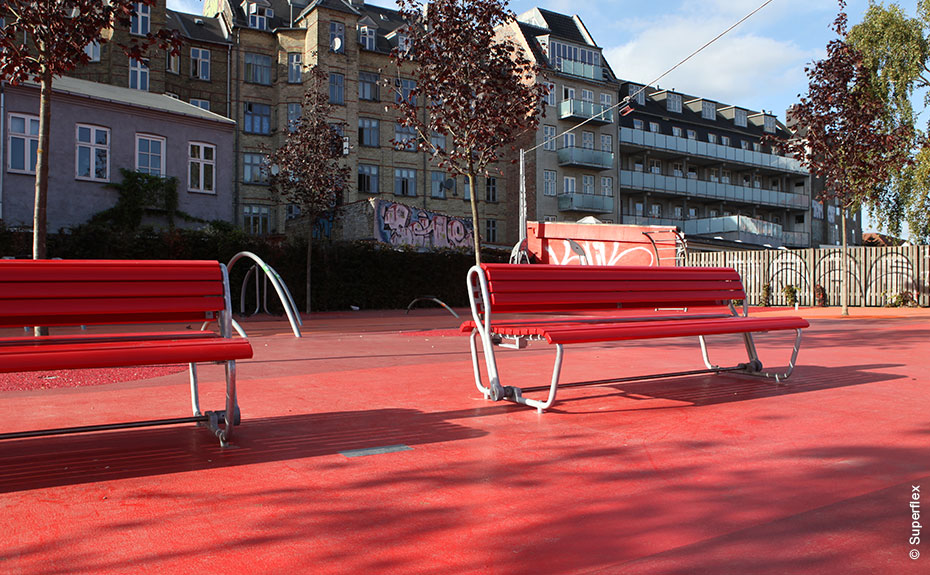
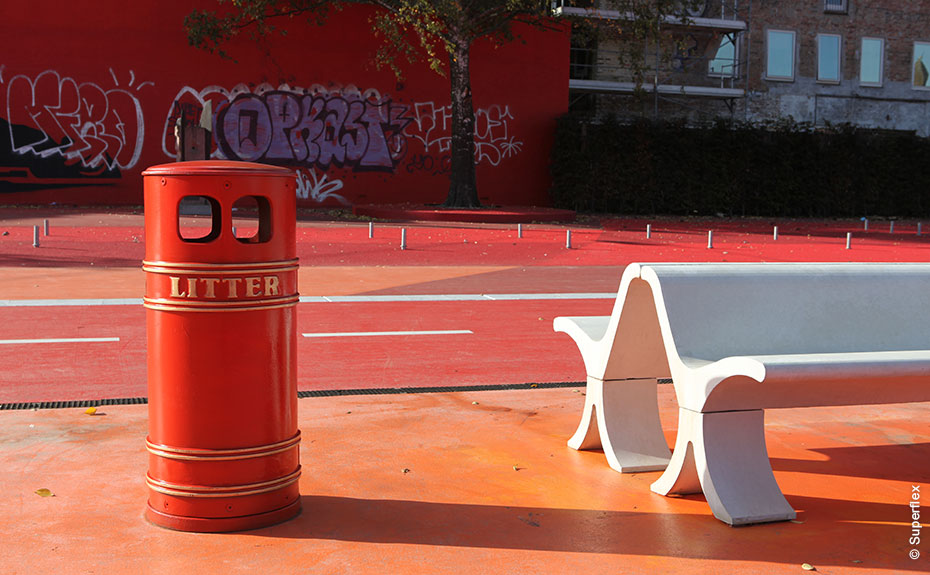
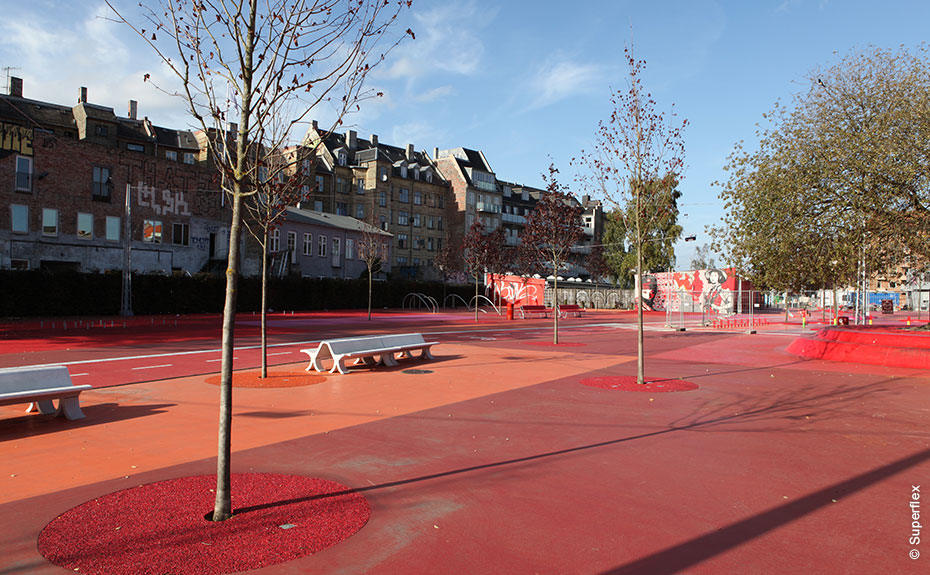
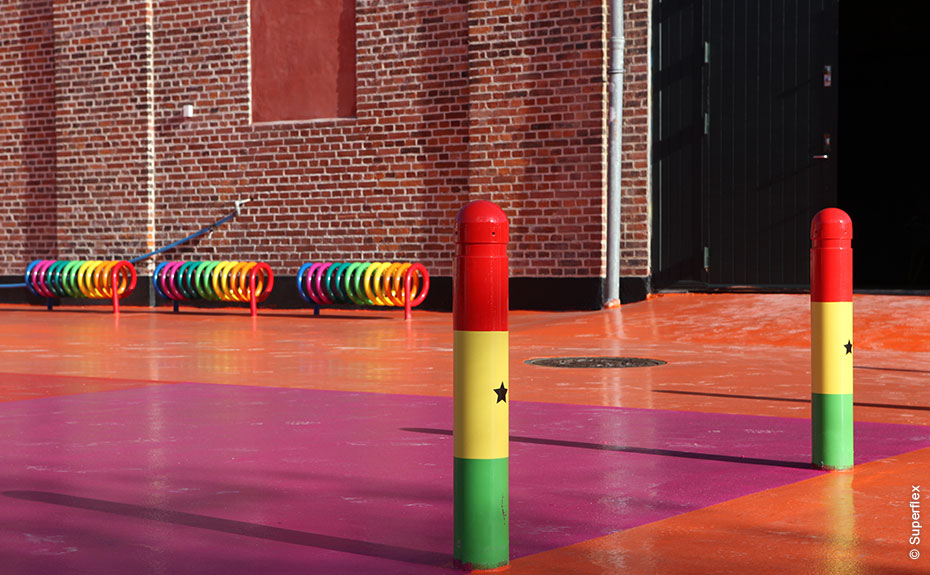
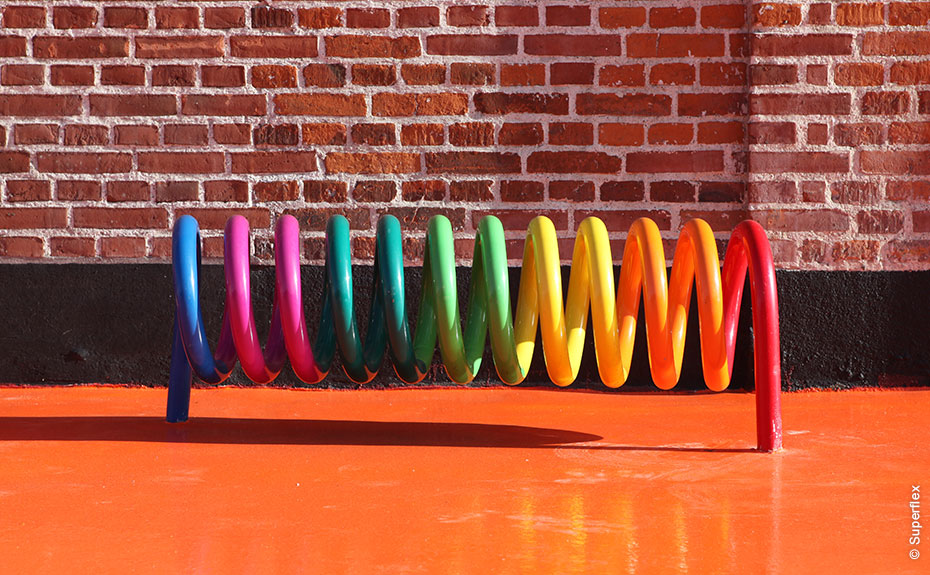
Superkilen // Copenhagen, Denmark
Superkilen is a park in Nørrebro, a Copenhagen district inhabited by people from many different cultural backgrounds. It’s a socially deprived area of Denmark. In urban planning, the objective was to strengthen the diverse identities of the local population and foster social contact with a dedicated concept. From the initial plan up to the implementation in terms of architecture and landscape design, it was developed in cooperation by BIG and TOPOTEK 1 and the Superflex artists’ group. The starting point was to delineate three distinct areas, marked in green, black and red. Colours and shapes were arranged to match and form a lively framework for specific street furniture. The red zone offers facilities for sports and culture to extend the local facilities. Gymnastics equipment and a large piazza activate this zone and offer space for social contact.
Locals can also meet in the community’s “living room” on the black square, which boasts a Moroccan fountain, a large Turkish bench and Japanese cherry trees. In addition, the square features tables, other benches and a barbecue for enjoying food and drink. Personal contact is facilitated by boards for backgammon and chess. The green zone of the park features a playground and lush green areas attracting children, teenagers and families. There’s ample space here – people can either meet in the playground, for a picnic or to do some exercise with their neighbours.









A Place of Nature // Qatar
The Qatar miracle – a sustainable luxury oasis in the desert
The sanzpont team of architects and designers intended to create nothing less than a palace for both humans and nature.
“An oasis is a miracle of life in the desert,” sanzpont say. In turn, they submitted a truly miraculous architecture concept to compete in an international tendering process for a VIP Palace in Qatar. The tendering process had been initiated to collect creative ideas and add dynamics to local urban development.
The design of the parts of their construction cites traditional Arabic symbols and shapes, skilfully lifting them to a new, future-oriented level. The palace dome represents the Sidra tree, an ancient symbol of community and solidarity. It’s a mystic element in Qatari culture which used to serve as a point of orientation in the desert, offering a place in the shade where Bedouins would gather.
The stylish palace, however, is not just a venue for those searching for relaxation or luxury, but is also a natural habitat – an integrated evaporation system inside the inner skin of the building provides a microclimate suited for botanic plants. Water is collected underground and piped up. It is desalinated by means of electrolysis in a system powered by solar energy, which in turn is generated in photovoltaic panels integrated into the outer skin of the dome and the roof. Water is also stored in artificial lakes surrounded by themed gardens and picnic areas.
The innovative, sustainable concept won the third prize in the international competition.
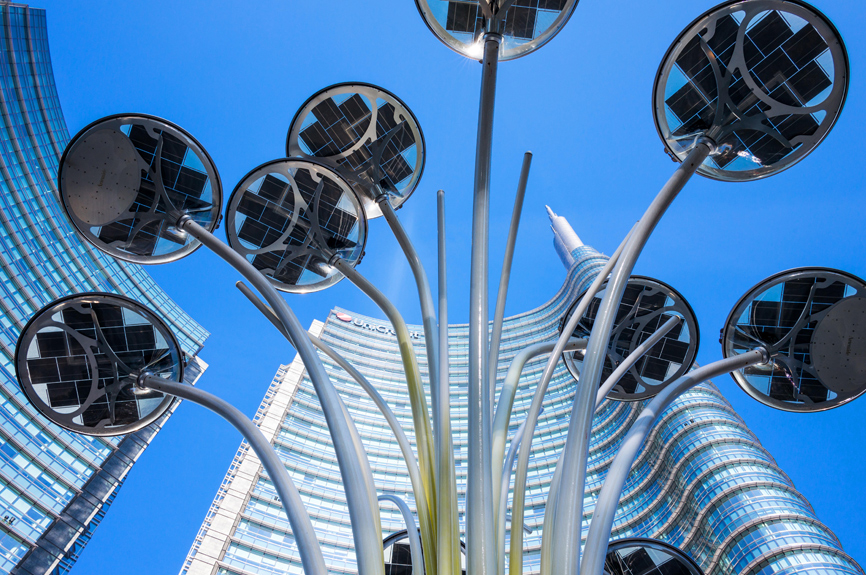
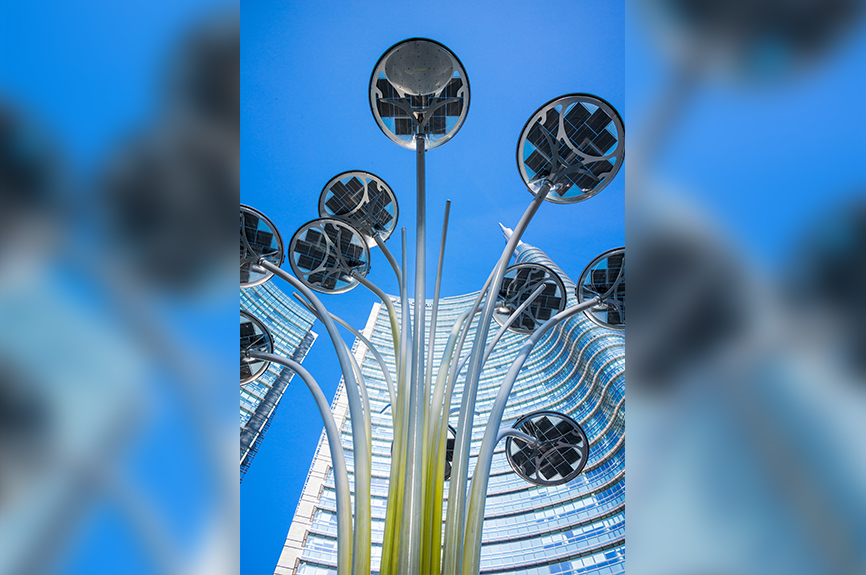
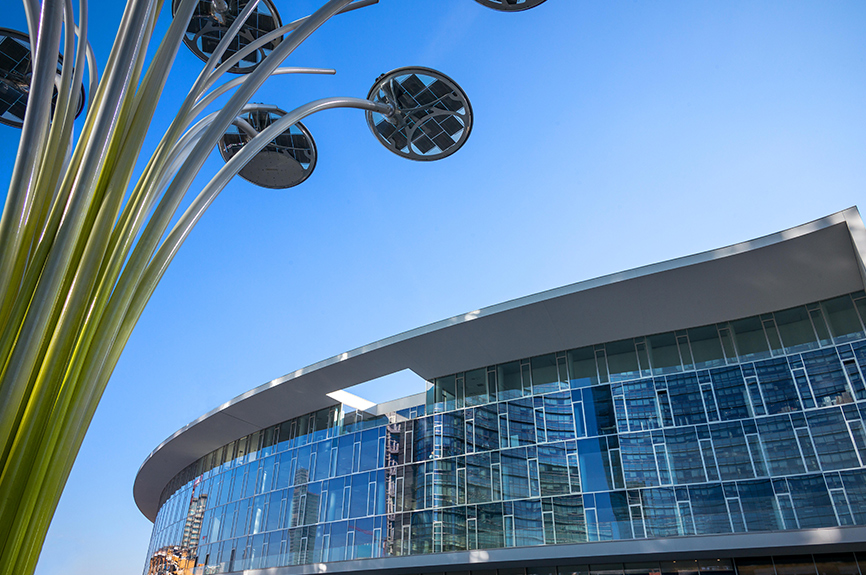
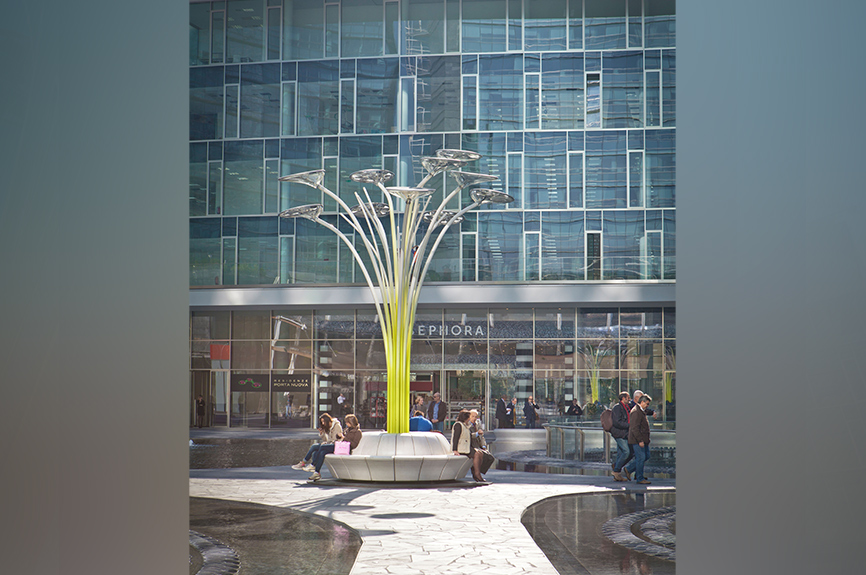
“Solar Tree” 2.0 // Various locations
Back to overview
In 2011, Ross Lovegrove’s Solar Tree was first launched as a product by Artemide, a manufacturer of sophisticated designer lamps. The Solar Tree is a novel way of lighting cities by means of solar energy. The system combines LEDs and photovoltaic cells, storing energy in the daytime which is released for LED operation at night. The result is a stunning new lighting mood. The Solar Tree 2.0 is the latest member of this product family: Thanks to its modular design, poles of different heights facilitate individual, attractive city lighting. Solar Trees allow for functional, network-enabled interactive solutions. These lamps are kind to humans and to the environment.

